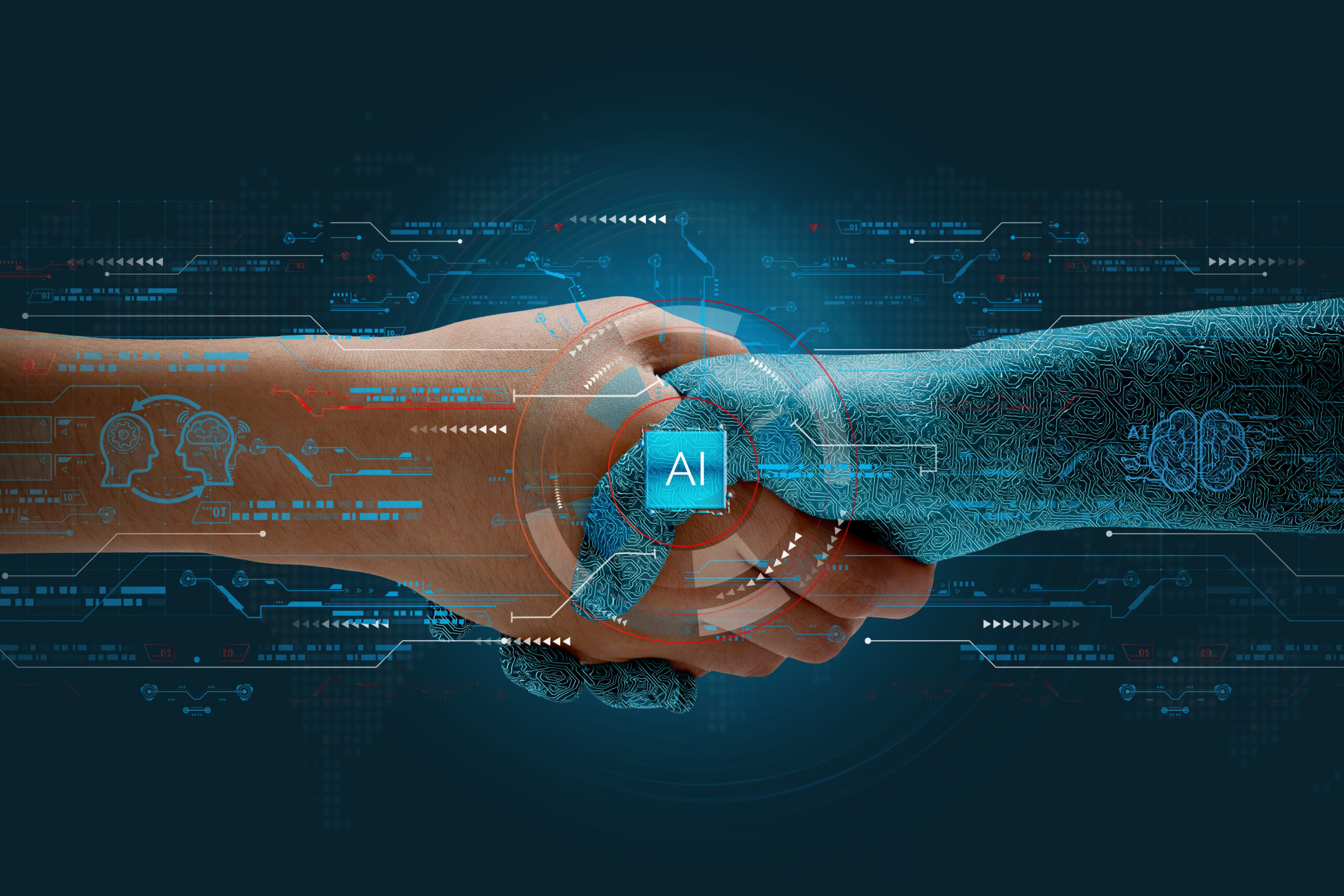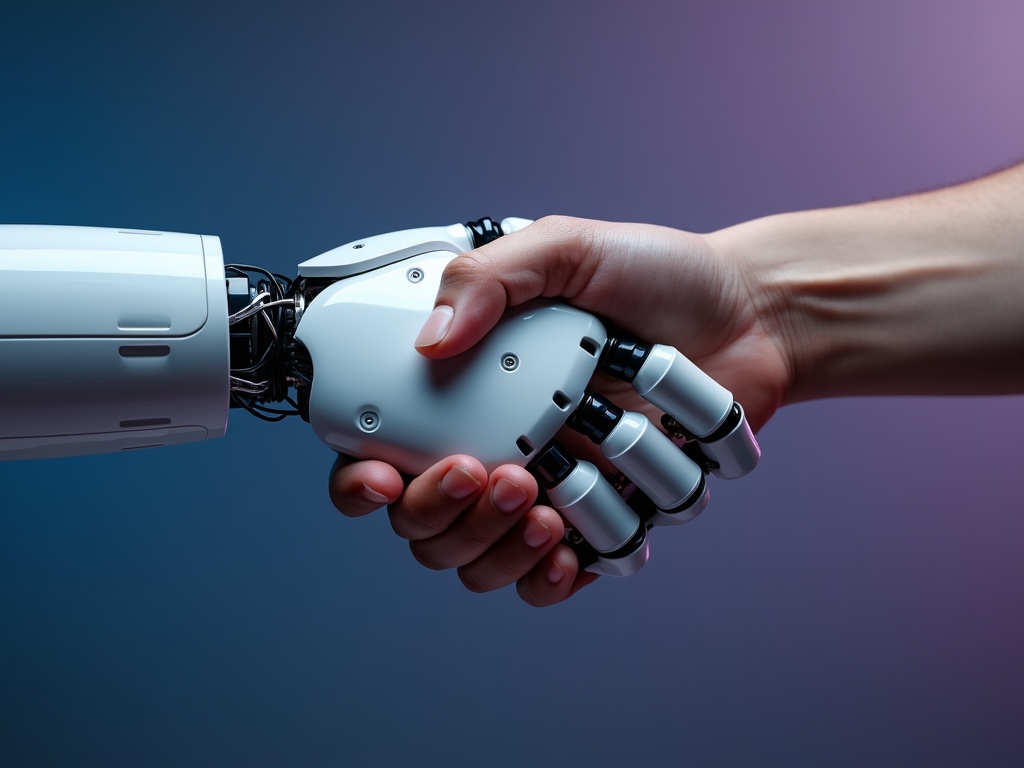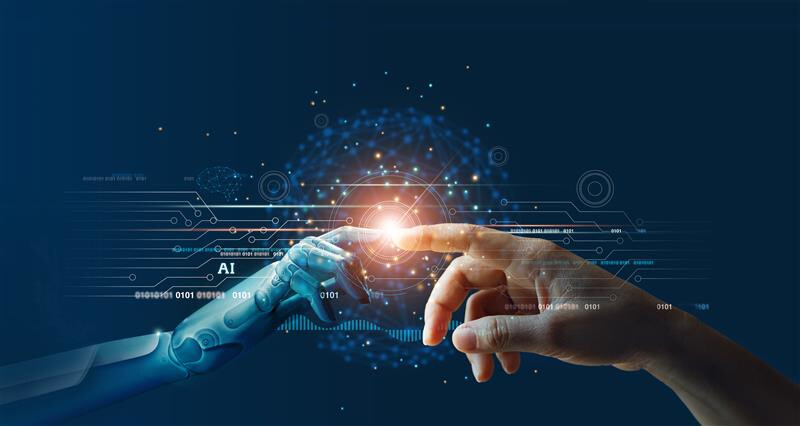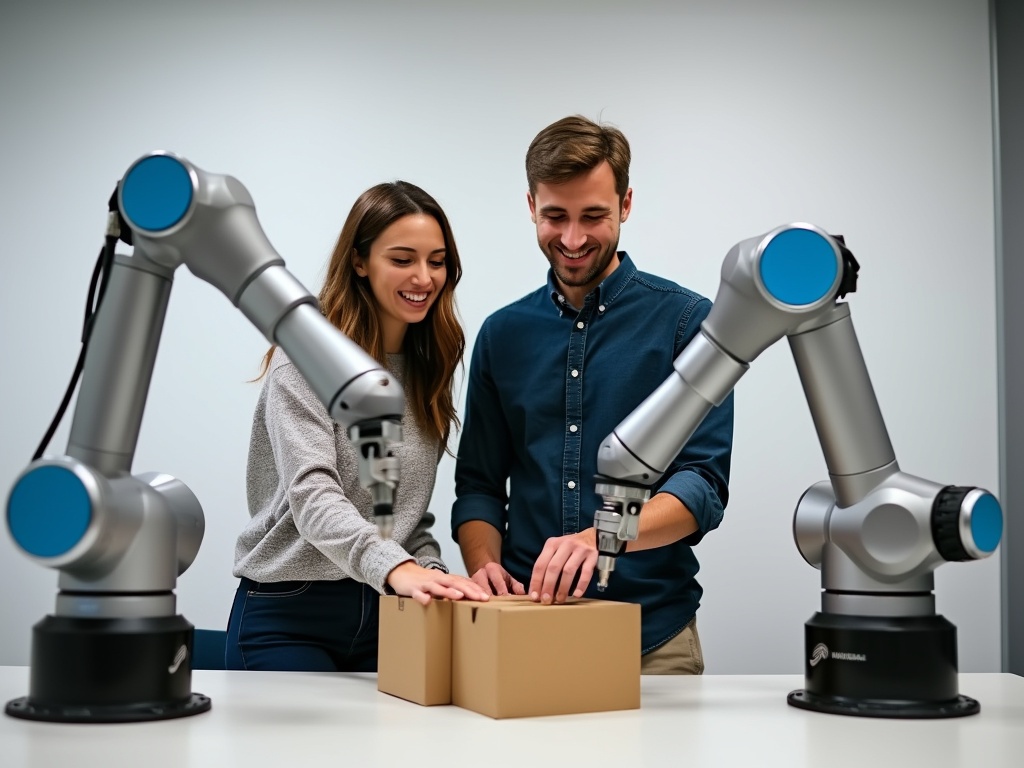Benefits of Human-AI Collaboration
Picture a workplace where human creativity meets machine precision. This isn’t science fiction; it’s the reality of human-AI collaboration shaping our future. As organizations worldwide embrace this powerful partnership, we’re witnessing a transformation that goes far beyond simple automation.
Recent research by Harvard Business Review involving 1,500 companies reveals that the most significant performance improvements happen when humans and AI work together, not when AI simply replaces human workers. This synergy creates a whole that’s greater than the sum of its parts.
Think of it like a championship dance duo; the human brings creativity, emotional intelligence, and complex problem-solving skills, while AI contributes lightning-fast data processing, pattern recognition, and tireless consistency. Together, they’re unbeatable.
What makes this partnership truly transformative? Imagine cutting your workload in half while doubling your impact. When humans and AI join forces, routine tasks get automated, decisions become more data-driven, and innovation flourishes. Companies are seeing dramatic improvements in productivity, cost savings, and their ability to tackle complex challenges.
This collaboration isn’t just about doing things faster or cheaper. It’s about unlocking new possibilities that neither humans nor machines could achieve alone. From healthcare breakthroughs to creative innovations in design and art, human-AI collaboration is pushing the boundaries of what’s possible.
The biggest performance improvements come when humans and smart machines work together, enhancing each other’s strengths.
Harvard Business Review
As we explore these benefits, you’ll discover how this powerful partnership is revolutionizing industries, empowering workers, and creating opportunities that were unimaginable just a few years ago. Welcome to the future of work, where human ingenuity and artificial intelligence create something truly extraordinary.
Enhanced Decision-Making


Organizations generate 2.5 quintillion bytes of data daily, far more than any human could process. This data deluge has transformed decision-making through human-AI collaboration, creating a synergy between AI’s analytical capabilities and human intuitive judgment.
AI systems excel at processing vast datasets quickly, detecting subtle patterns, and generating insights that might elude experienced professionals. In high-stakes medical scenarios, AI assists surgeons by analyzing countless patient records and research papers in seconds, providing evidence-based recommendations that complement the physician’s clinical expertise and intuition.
The human element remains irreplaceable. While AI excels at processing information, human decision-makers uniquely understand context, navigate complex social dynamics, and draw upon years of experience. This combination of AI’s raw analytical power with human wisdom leads to more nuanced and effective choices.
Consider early-stage investors evaluating startup opportunities. AI can swiftly analyze market trends, financial metrics, and competitive landscapes. However, experienced investors bring crucial pattern recognition abilities shaped by years in the field—they can sense team dynamics, evaluate founder capabilities, and gauge market timing in ways that pure data analysis cannot capture.
In several studies I’ve conducted over the past eight years looking at high-stakes decisions, such as surgeons making life-or-death emergency room decisions or early-stage investors deciding how to allocate millions of dollars in startup capital, I found that the role of gut feel is often to inspire a leader to make a call, particularly when the decision is risky.
Laura Huang, Associate Professor at Harvard Business School
This collaborative approach transforms decision-making by balancing computational power with human judgment. When AI handles data processing, human decision-makers can focus on higher-level strategy, creative problem-solving, and contextual understanding. The result is faster, more informed decisions that leverage both artificial and human intelligence.
Increased Efficiency and Productivity


A symbolic handshake between human and robot.
Combining human expertise with artificial intelligence creates unprecedented opportunities for workplace efficiency. According to McKinsey research, while about half of workplace tasks can be automated, only 5% of jobs can be fully automated. This highlights the importance of human-AI collaboration rather than replacement. AI excels at handling repetitive, data-intensive tasks that once consumed valuable human work hours. F
or example, AI systems can analyze millions of medical images accurately, freeing doctors to focus on treatment planning and strengthening patient relationships. This partnership leads to better healthcare outcomes than either humans or AI could achieve alone. Productivity gains from human-AI collaboration extend beyond task automation. An interdisciplinary study of production logistics found that mixed human-machine teams demonstrated superior coordination, efficiency, and safety compared to either all-human or all-machine groups. This finding reveals how AI augments human capabilities rather than simply replacing them.
Resource optimization is another key benefit of this collaboration. AI systems can process vast amounts of data to identify inefficiencies in workflows, predict maintenance needs, and optimize resource allocation. Meanwhile, humans provide critical thinking and creative problem-solving to implement these insights effectively.
| Task Type | Human-Only Teams | AI-Only Systems | Human-AI Teams |
|---|---|---|---|
| Decision-Making Tasks | Moderate Performance | High Performance | Lower than AI-Only |
| Creative Tasks | Moderate Performance | Moderate Performance | High Performance |
| Medical Diagnosis | Moderate Accuracy | High Accuracy | High Accuracy |
| Customer Service | High Customer Satisfaction | 24/7 Availability | High Satisfaction and Availability |
| Supply Chain Management | Moderate Efficiency | High Efficiency | High Efficiency |
Beyond raw productivity metrics, this synergistic approach allows organizations to achieve higher output quality with fewer resources. Workers freed from repetitive tasks can dedicate more time to complex challenges that require uniquely human qualities—creativity, emotional intelligence, and strategic thinking. As noted by Professor Matthias Klumpp of the University of Göttingen, “There will be many scenarios and uses in the future where mixed teams of robots and humans are superior to entirely robotic machine systems.”
Cost Reduction and Risk Mitigation
Modern businesses have discovered a powerful ally in artificial intelligence for slashing operational costs and preventing costly mishaps. According to recent research, companies implementing AI solutions have seen operational cost reductions of 5% to 10% in maintenance and repairs alone, while achieving 20% to 50% improvement in maintenance planning efficiency.
Predictive analytics stands at the forefront of AI’s risk mitigation capabilities. By analyzing vast amounts of historical data and real-time information, AI systems can identify potential equipment failures before they occur, helping organizations avoid expensive emergency repairs and production shutdowns. For instance, manufacturing companies using AI-powered predictive maintenance have reported a remarkable 70% decrease in unexpected breakdowns.
The financial impact extends beyond just maintenance savings. AI’s automation capabilities are transforming labor-intensive processes across industries. Take the case of customer service operations, where AI-powered chatbots and virtual assistants handle routine inquiries 24/7. This automation has enabled companies to reduce their customer service costs by up to one-third while maintaining—and often improving—service quality.
Supply chain operations have seen particularly impressive results. McKinsey’s research reveals that 41% of companies achieved cost reductions between 10% and 19% after implementing AI in their supply chain management. These savings come from AI’s ability to optimize inventory levels, predict demand fluctuations, and streamline logistics operations with unprecedented accuracy.
| Industry | AI Application | Cost Reduction | Efficiency Improvement |
|---|---|---|---|
| Manufacturing | AI-driven automation | 30% reduction in downtime | 25% savings in maintenance costs |
| Retail | Inventory management | 20% reduction in inventory holding costs | Optimized stock levels |
| Energy Management | Real-time monitoring and adjustment | 40% reduction in energy usage | Enhanced sustainability |
| Financial Services | AI-driven chatbots | 35% decrease in operational costs | 50% reduction in call center workload |
| Healthcare | Automated administrative processes | 20% reduction in administrative costs | Improved diagnostic accuracy |
| Telecommunications | Customer behavior analysis | 10% reduction in operational costs | 15% decrease in customer churn |
Beyond the immediate cost savings, AI’s risk mitigation capabilities provide long-term financial benefits. By analyzing market trends, customer behavior patterns, and operational data, AI systems help organizations make more informed decisions about resource allocation and investment strategies. This proactive approach to risk management helps companies avoid costly mistakes and capitalize on emerging opportunities more effectively.
The savings can be 10 or 20 times when using AI to optimize business processes and mitigate risks
Mark Read, CEO of WPP
Perhaps most importantly, AI’s ability to process and analyze massive amounts of data in real-time means organizations can identify and respond to potential risks faster than ever before. This rapid response capability not only prevents financial losses but also protects company reputation and maintains business continuity—factors that have immeasurable value in today’s business environment.
Fostering Innovation and Creativity
Australia’s Commonwealth Scientific and Industrial Research Organization (CSIRO) launched a $12 million Collaborative Intelligence initiative, discovering that groundbreaking innovations emerged when humans and AI systems worked as true partners rather than mere tools. This fusion of human ingenuity with AI’s computational prowess is reshaping creativity and problem-solving across industries.
Research by Harvard Business Review shows that companies see significant performance gains when humans and AI systems complement each other’s strengths. While AI excels at analyzing vast datasets and identifying hidden patterns, humans bring critical thinking, emotional intelligence, and nuanced judgments.
This collaborative approach manifests across different sectors. In materials science, researchers have used AI to predict promising chemical combinations for next-generation car batteries, with human scientists refining and testing these AI-generated possibilities. The result? The discovery of four innovative battery compositions that might have taken years to identify through traditional methods alone.
The creative synergy extends beyond technical fields. AI systems can now generate initial creative concepts in design, music, or writing, which human artists and creators can then interpret, modify, and elevate. This partnership allows for rapid iteration and experimentation while preserving the authentic human touch that resonates with audiences.
While AI will radically alter how work gets done and who does it, the technology’s larger impact will be in complementing and augmenting human capabilities, not replacing them.
Harvard Business Review
Importantly, this collaborative model democratizes innovation. When properly implemented, AI tools can level the creative playing field, allowing individuals with varying levels of expertise to contribute meaningful ideas. The technology serves as a catalyst, amplifying human creativity rather than replacing it, and enabling breakthrough innovations that neither humans nor machines could achieve alone.
Addressing Ethical Considerations
As artificial intelligence becomes increasingly integrated into business and society, establishing robust ethical frameworks for AI development and deployment has become essential. The systems we build today will shape AI’s impact on humanity for generations, making it crucial to address key ethical considerations around transparency, accountability, and bias.
Algorithmic bias is a significant challenge in ethical AI development. Even well-intentioned AI systems can perpetuate or amplify societal biases when trained on historically biased data. Research has shown that bias can occur at any phase of an AI system’s lifecycle—from data collection to algorithmic function. Implementing rigorous testing and monitoring processes is essential to detect and mitigate potential biases before they cause real-world harm.
Transparency is another vital ethical pillar for responsible AI development. Organizations must be clear about how their AI systems make decisions, what data they use, and what oversight mechanisms are in place. This transparency helps build trust with users and stakeholders while enabling meaningful human oversight. When people understand how AI arrives at its conclusions, they can better identify potential issues and provide informed feedback.
Accountability frameworks are the third critical component of ethical AI governance. Clear lines of responsibility must be established for AI systems’ decisions and impacts. This includes having designated teams responsible for monitoring AI performance, investigating issues, and implementing corrections when problems arise. Robust accountability measures are necessary to ensure AI systems remain aligned with human values and societal interests.
Integrating these ethical principles requires ongoing collaboration between technologists, ethicists, policymakers, and the communities affected by AI systems. Building truly ethical AI demands diverse perspectives and a shared commitment to responsible innovation.
We talk of people being ‘accountable’ or ‘answerable’ to other people and mean nothing more by it than that the people to whom there is accountability are in a position to inflict punishment on those being held accountable should they deem them guilty of misconduct.
Journal of Ethics and Information Technology
To maximize the benefits of human-AI collaboration while minimizing potential harms, organizations must move beyond viewing ethics as a compliance checkbox and instead embed ethical considerations into every stage of AI development and deployment. This proactive approach helps ensure that as AI capabilities expand, they enhance rather than diminish human agency and wellbeing.
How SmythOS Enhances Human-AI Collaboration


A fusion of humanity and technology in harmony. – Via smythos.com
Effective human-AI collaboration has become crucial for business success. SmythOS stands at the forefront of this transformation, offering a sophisticated platform that bridges human creativity and artificial intelligence capabilities.
The platform’s visual builder revolutionizes how teams interact with AI systems. Instead of wrestling with complex code, professionals can design and modify AI workflows through an intuitive interface. This democratization of AI development means that employees across all divisions can leverage AI’s efficiencies, whether they’re in customer service, HR, or facilities management.
SmythOS’s seamless API integration capabilities set it apart from conventional platforms. The system unifies various data sources and tools into a cohesive ecosystem, enabling AI agents to access and process information from multiple channels simultaneously. This integration eliminates the traditional silos that often hamper productivity and innovation in AI development.
Built-in monitoring features provide unprecedented visibility into AI operations, allowing teams to track performance, identify potential issues, and optimize workflows in real-time. This transparency builds trust between human operators and AI systems, a crucial factor in successful collaboration. The platform’s enterprise-grade security controls ensure that all these interactions occur within a protected environment, addressing the critical concerns of data privacy and system integrity.
By ensuring students truly understand the future of AI Orchestration and are equipped to walk into companies across the globe with a fundamental understanding of how to build multi-agent systems, we believe we can empower future generations to harness the power of artificial intelligence rather than fear it
Perhaps most importantly, SmythOS’s approach to human-AI collaboration isn’t about replacing human workers – it’s about amplifying their capabilities. The platform transforms AI from a mysterious black box into a transparent, controllable tool that enhances human decision-making and creativity. This empowerment leads to more efficient operations, better outcomes, and a more engaged workforce ready to embrace the future of AI-enhanced productivity.
Looking Ahead: The Future of Human-AI Collaboration


Two individuals working with advanced robotic arms.
The landscape of human-AI collaboration stands at a transformative threshold. With rapid advancements in machine learning, AI partners have become increasingly sophisticated in their ability to work alongside humans across diverse fields, from healthcare to creative endeavors.
The economic implications of this evolution are staggering. Industry projections suggest AI could contribute up to $15.7 trillion to the global economy by 2030—a figure that exceeds the combined output of China and India. This growth isn’t just about replacing human work; it’s about amplifying human potential through collaborative intelligence.
Evidence of this synergistic future is already emerging in workplace environments. Studies show that 81% of employees report improved overall performance when working with AI tools, while 89% believe AI could support up to half of their daily tasks. This isn’t merely about automation—it’s about creating an ecosystem where human creativity and AI capabilities enhance each other.
The evolution of collaborative technologies is particularly promising in their ability to bridge geographical and operational gaps. AI-powered virtual assistants are transforming how distributed teams work together, offering real-time solutions and creating more connected workplace environments, even in remote settings. This technological infrastructure is laying the groundwork for even more sophisticated forms of human-AI cooperation.
Robots and artificial intelligence increasingly serve as collaborative partners to humans, equipped to collaborate on joint tasks in ways that augment human capabilities rather than replace them.
Wiley Online Library
Looking forward, the key to maximizing this potential lies in viewing AI not as a replacement for human intelligence, but as a tool for augmenting human capabilities. As these technologies continue to mature, we can expect to see even more innovative applications that combine the analytical power of AI with uniquely human traits like creativity, emotional intelligence, and ethical judgment—creating a future where both human and artificial intelligence can truly thrive together.
Last updated:
Disclaimer: The information presented in this article is for general informational purposes only and is provided as is. While we strive to keep the content up-to-date and accurate, we make no representations or warranties of any kind, express or implied, about the completeness, accuracy, reliability, suitability, or availability of the information contained in this article.
Any reliance you place on such information is strictly at your own risk. We reserve the right to make additions, deletions, or modifications to the contents of this article at any time without prior notice.
In no event will we be liable for any loss or damage including without limitation, indirect or consequential loss or damage, or any loss or damage whatsoever arising from loss of data, profits, or any other loss not specified herein arising out of, or in connection with, the use of this article.
Despite our best efforts, this article may contain oversights, errors, or omissions. If you notice any inaccuracies or have concerns about the content, please report them through our content feedback form. Your input helps us maintain the quality and reliability of our information.
